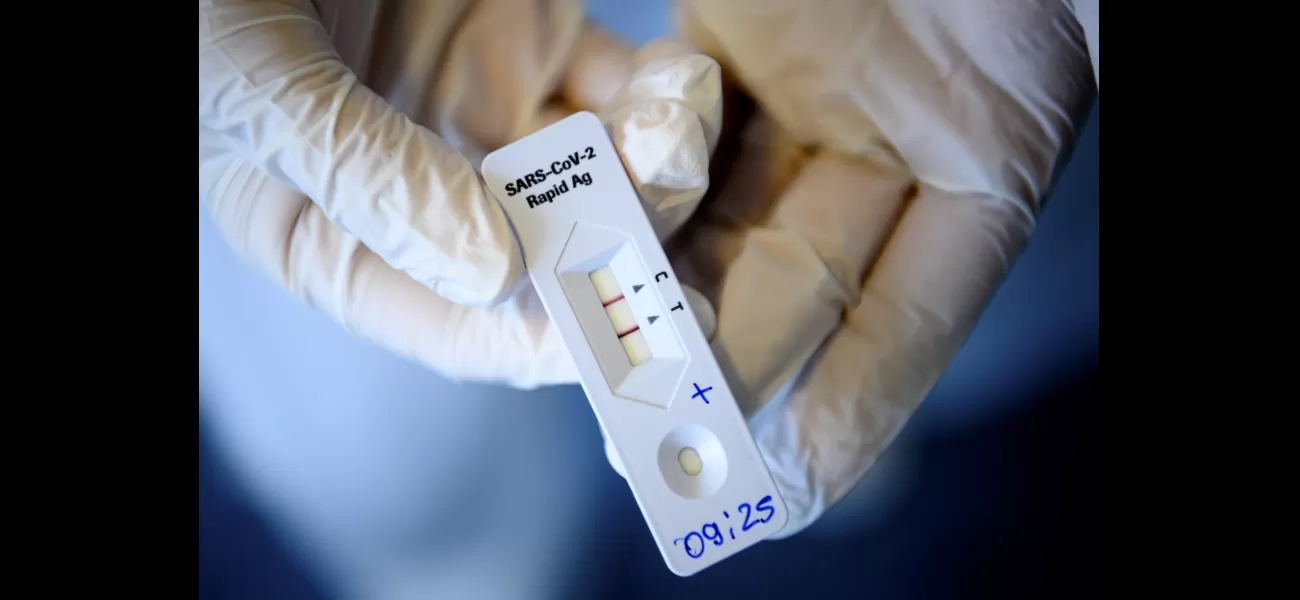Important info on Australia's new COVID variants, FLiRT.
New COVID-19 strains called "FLiRT" are spreading globally, including in Australia. Here's what you should know.
May 23rd 2024.

There's been a lot of buzz lately about a new family of COVID-19 strains, playfully dubbed "FLiRT", that have been making their way around the globe and have now arrived in Australia. While it may seem like they just popped up out of nowhere, these strains were first detected only five months ago. But one of the subvariants, known as KP.2, has already gained dominance in the United States, indicating that they are highly contagious.
So what exactly are these FLiRT strains? Well, they are a group of subvariants of COVID-19 that have evolved from the JN.1 subvariant, which emerged late last year and caused a spike in infections earlier this year. Some of the subvariants in this family include KP.2, KP.3, JN.1.7, and others that typically start with "JN" or "KP". KP.2, in particular, has been spreading rapidly and has become the dominant subvariant in the US this month. The World Health Organization officially designated it as a variant under monitoring on May 3rd.
But why the name "FLiRT"? It actually refers to specific mutations in the virus' spike proteins that make these subvariants unique. And while KP.2 may be making headlines right now, it's worth noting that there are other FLiRT subvariants out there as well.
As for Australia, there have been confirmed cases of FLiRT subvariants in the country. However, the data varies from state to state and is not as frequently updated as it was during the height of the pandemic. But according to data released by NSW Health today, KP.2, KP.3, and another JN.1 sublineage, KW.1.1, make up more than half of the COVID-19 cases in the state currently. And it's not just in NSW – authorities across the country have reported an increase in cases in recent weeks, going against the trend of decreasing numbers since the start of the year.
Now, you may be wondering if these FLiRT strains are any different from the other variants we've seen so far. While they do seem to be highly contagious, experts from the US, where they first gained prominence before reaching Australia, say that there is no significant difference in symptoms or severity of illness caused by these subvariants. Dr. William Schaffner, an infectious disease expert at Vanderbilt University, stated that the FLiRT strains appear to be just as transmissible as other Omicron subvariants. However, it's still early days, and scientists are still learning about this new family of strains.
Schaffner also pointed out that in the past, there have been variants that started out strong but didn't end up becoming dominant. It's hard to predict what the future holds for these FLiRT subvariants – they could continue to gain dominance or plateau at a certain percentage of cases. But one thing is for sure – the virus is in charge, and we can't predict its next move. All we can do is keep a close eye on the situation and adapt accordingly.
So what exactly are these FLiRT strains? Well, they are a group of subvariants of COVID-19 that have evolved from the JN.1 subvariant, which emerged late last year and caused a spike in infections earlier this year. Some of the subvariants in this family include KP.2, KP.3, JN.1.7, and others that typically start with "JN" or "KP". KP.2, in particular, has been spreading rapidly and has become the dominant subvariant in the US this month. The World Health Organization officially designated it as a variant under monitoring on May 3rd.
But why the name "FLiRT"? It actually refers to specific mutations in the virus' spike proteins that make these subvariants unique. And while KP.2 may be making headlines right now, it's worth noting that there are other FLiRT subvariants out there as well.
As for Australia, there have been confirmed cases of FLiRT subvariants in the country. However, the data varies from state to state and is not as frequently updated as it was during the height of the pandemic. But according to data released by NSW Health today, KP.2, KP.3, and another JN.1 sublineage, KW.1.1, make up more than half of the COVID-19 cases in the state currently. And it's not just in NSW – authorities across the country have reported an increase in cases in recent weeks, going against the trend of decreasing numbers since the start of the year.
Now, you may be wondering if these FLiRT strains are any different from the other variants we've seen so far. While they do seem to be highly contagious, experts from the US, where they first gained prominence before reaching Australia, say that there is no significant difference in symptoms or severity of illness caused by these subvariants. Dr. William Schaffner, an infectious disease expert at Vanderbilt University, stated that the FLiRT strains appear to be just as transmissible as other Omicron subvariants. However, it's still early days, and scientists are still learning about this new family of strains.
Schaffner also pointed out that in the past, there have been variants that started out strong but didn't end up becoming dominant. It's hard to predict what the future holds for these FLiRT subvariants – they could continue to gain dominance or plateau at a certain percentage of cases. But one thing is for sure – the virus is in charge, and we can't predict its next move. All we can do is keep a close eye on the situation and adapt accordingly.
[This article has been trending online recently and has been generated with AI. Your feed is customized.]
[Generative AI is experimental.]
0
0
Submit Comment





